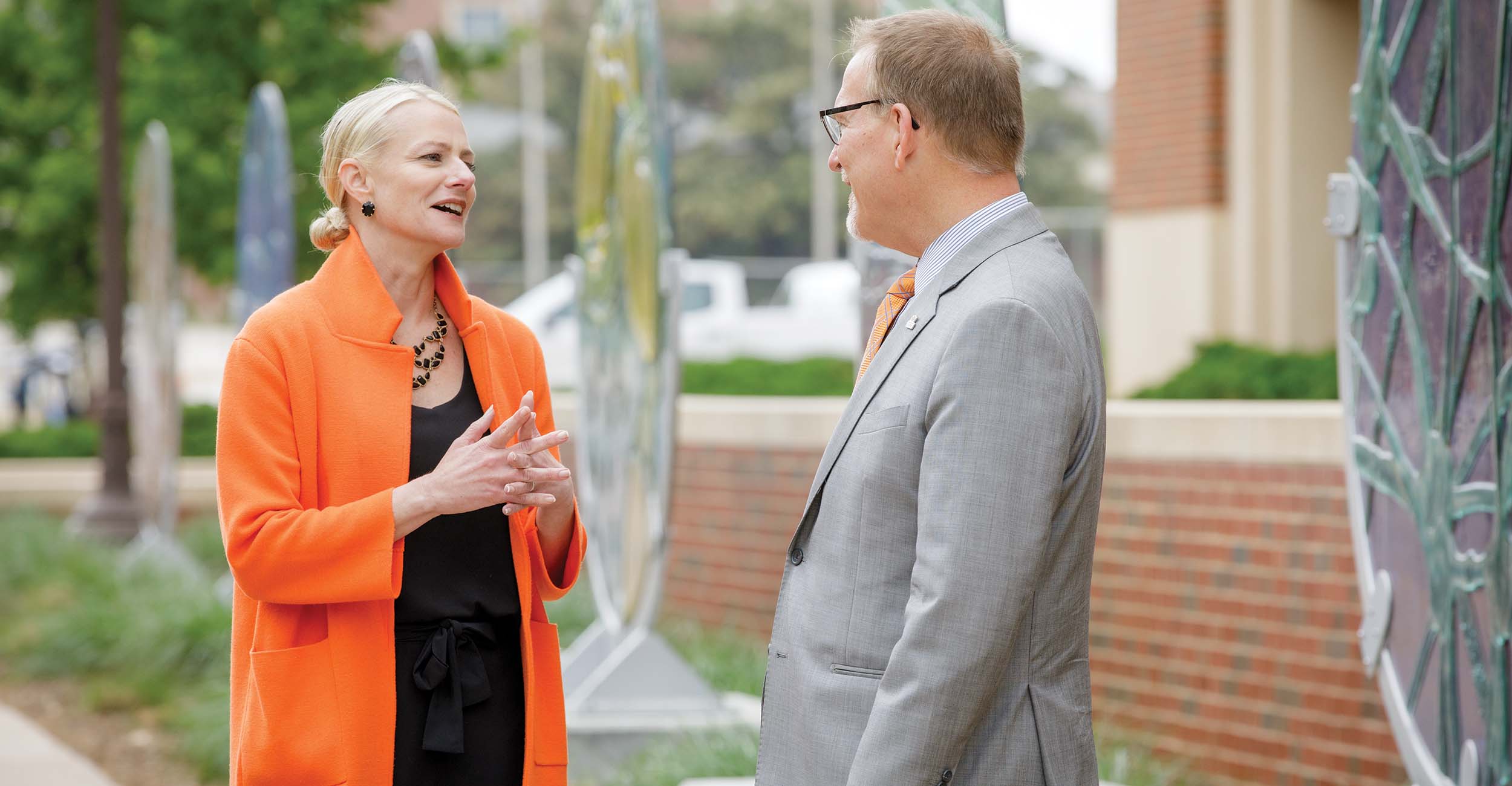
Dr. Kayse Shrum and Dr. Kenneth Sewell discuss the future of OSU Research
Friday, September 17, 2021
Media Contact: Harrison Hill | Research Communications Specialist | 405-744-5827 | harrison.c.hill@Okstate.edu
For Dr. Kayse Shrum, public-impact research is a core focus in her new role as president of Oklahoma State University. To learn more, Dr. Kenneth Sewell, vice president for research at OSU, sat down with Shrum to discuss her life, research and vision for the future.
Given the land-grant mission of Oklahoma State — which includes teaching, research and extension — how do you see research contributing to the overall value that OSU brings to our students and to the state of Oklahoma?
I believe research is so important to the university and to society. I think many times people don’t really understand how it impacts our lives. I can look at the start of the pandemic as an example, where we were able to take the animal diagnostic lab, which was doing virology testing, and convert that for human testing. And we had all these researchers come in and start actually sequencing the virus.
We were doing lots of things.
I think that might’ve been the first glimpse for many to understand the importance of university research. It’s a great way for us to enrich the experience of our students, but we’re solving society’s most pressing needs, whether it’s a bench researcher or someone who’s studying public health or aerospace.
That’s an impact that only a research university can have. And as a landgrant, that’s a part of our mission. So I think we’re very well equipped and prepared to be able to advance our research in a way that makes a huge difference, not only to the state, but to the world.
As a first-generation college student yourself, did you have any personal experience
with university research or science training that particularly inspired or motivated
you to pursue aSTEM field and ultimately a medical
career?
When we were dissecting frogs in high school, I was really interested in it. It just fascinated me, so I knew I wanted to go into science.
When I was in college, I had the opportunity to visit the medical school, and we went into the neuroanatomy lab. Of course, in neuroanatomy, there are brains and all sorts of things. And I just found that so fascinating that there in the lab was a human brain and to me … that was a person. I mean, their memories, their thoughts, this brain controlled everything about them and that was fascinating to understand how that happens. In that moment, I knew
I wanted to dig in and learn more about physiology, about how the human body works and that’s really kind of what got me into the STEM fields. I think for most people, that is not something that is so fascinating to them. It’s probably off-putting, but I think that’s why it’s important that we expose students to a broad education because you never know what’s going to ignite that passion.
When you come here, you may not know what you want, but you just have so many opportunities to find that thing that sparks that interest for you.
The economic impact of a comprehensive research university such as OSU is quite extensive and comes largely by preparing the workforce for the jobs of both today and tomorrow. But beyond workforce development, do you see a significant role for OSU to play in creating economic development through our research and technology development and through corporate R&D partnerships?
Research and a comprehensive university play a huge role in the economy. I had the
honor of serving the governor as his secretary of science and innovation. And in that
role, it was about how our research universities — through not only university research,
but through corporate partnerships and industrydriven research — can really grow and
expand Oklahoma’s economy.
In addition, how does what we do at the university attract new industry to the state? When we’re bringing in new companies, they need a qualified workforce, but they also want to continue to grow and expand and develop into the future. And so being able to have partnerships with the university is very attractive. Think about the synergy of that for our students. As we continue to industry partnerships and the economy, we are bringing corporate partners to Oklahoma.
And through that research, students have the opportunity to have real life experience during their education.
Photo By: Gary Lawson
